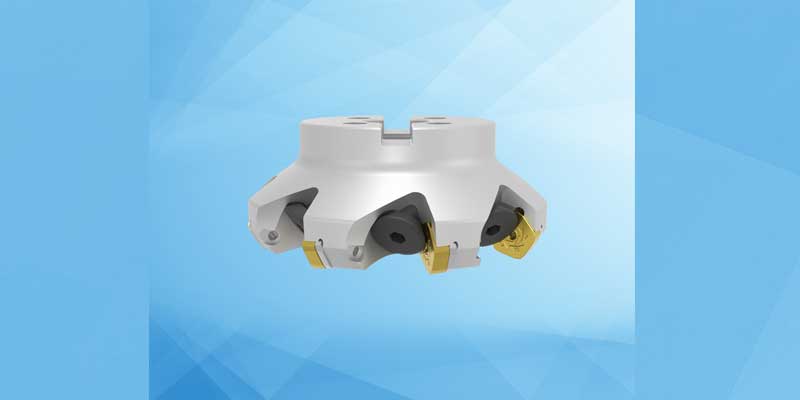Schedule a Call Back
Coming Soon OLED TVs in the Living Room
 Technical Articles
Technical Articles- Mar 01,12
OLED was the most twitted topic on CES as more people discussed OLED display technology than any other tech-world trend. Chandragupta Amritkar reports from Las Vegas.
 Is 2012 the year of OLEDs? It probably would be as more and more companies are focusing on OLED (organic light-emitting diode) products. Though in existence for a few years, this year's CES brought them into focus as the two technology powerhouses - Samsung and LG Electronics - wowed the crowd with the new 55-inch 3-D capable OLED TVs for the first time. Even CEA president Gary Shapiro, while addressing the press, said OLED was one of the main topics at CES.
Is 2012 the year of OLEDs? It probably would be as more and more companies are focusing on OLED (organic light-emitting diode) products. Though in existence for a few years, this year's CES brought them into focus as the two technology powerhouses - Samsung and LG Electronics - wowed the crowd with the new 55-inch 3-D capable OLED TVs for the first time. Even CEA president Gary Shapiro, while addressing the press, said OLED was one of the main topics at CES.
Mobile phones were the first to adopt AMOLED (Active-matrix OLEDs) displays and are the largest market for OLEDs today. Simple MP3 players with small character displays or A/V players with large full-colour displays - many such devices use OLED panels today. Several compact and high-end cameras use AMOLED displays that offer rich colours and high contrast and brightness OLED lamps are currently very expensive, but already several companies are offering these in the premium lighting category. OLEDs are also used in wristwatches, headsets, car audio systems, remote controllers, digital photo frames and many other kinds of devices. OLEDs are also used in large-area light-emitting elements for general illumination. OLED TVs aren't available yet commercially - but some high-end small models are already shipping in small volumes and that's our focus in this column.
So what is an OLED?
 An OLED is a light-emitting diode (LED) in which the emissive electro luminescent layer is a film of organic compounds which emit light in response to an electric current. This layer of organic semiconductor material is situated between two electrodes. Generally, at least one of these electrodes is transparent. There are two main families of OLEDs: those based on small molecules and those employing polymers. Adding mobile ions to an OLED creates a Light-emitting Electrochemical Cell or LEC, which has a slightly different mode of operation. OLED displays can use either passive-matrix (PMOLED) or active-matrix addressing schemes. Active-matrix OLEDs (AMOLED) require a thin-film transistor backplane to switch each individual pixel on or off, but allow for higher resolution and larger display sizes.
An OLED is a light-emitting diode (LED) in which the emissive electro luminescent layer is a film of organic compounds which emit light in response to an electric current. This layer of organic semiconductor material is situated between two electrodes. Generally, at least one of these electrodes is transparent. There are two main families of OLEDs: those based on small molecules and those employing polymers. Adding mobile ions to an OLED creates a Light-emitting Electrochemical Cell or LEC, which has a slightly different mode of operation. OLED displays can use either passive-matrix (PMOLED) or active-matrix addressing schemes. Active-matrix OLEDs (AMOLED) require a thin-film transistor backplane to switch each individual pixel on or off, but allow for higher resolution and larger display sizes.
OLED TV
 An OLED TV screen uses a new display technology called OLED. OLED televisions are brighter, more efficient, thinner and feature better refresh rates and contrast than either LCD or Plasma. An OLED display works without a backlight as they emit light. Thus, it can display deep black levels and can be thinner and lighter than a liquid crystal display (LCD). In low ambient light conditions such as a dark room an OLED screen can achieve a higher contrast ratio than an LCD, whether the LCD uses cold cathode fluorescent lamps or the more recently developed LED backlight. Due to its low thermal conductivity, an OLED typically emits less light per area than an inorganic LED.
An OLED TV screen uses a new display technology called OLED. OLED televisions are brighter, more efficient, thinner and feature better refresh rates and contrast than either LCD or Plasma. An OLED display works without a backlight as they emit light. Thus, it can display deep black levels and can be thinner and lighter than a liquid crystal display (LCD). In low ambient light conditions such as a dark room an OLED screen can achieve a higher contrast ratio than an LCD, whether the LCD uses cold cathode fluorescent lamps or the more recently developed LED backlight. Due to its low thermal conductivity, an OLED typically emits less light per area than an inorganic LED.
OLED TV panels offers several advantages over LCDs - faster refresh rate, better contrast and better colour reproduction, less thick (prototypes of OLED televisions that are merely 0.3 mm thick), provides almost 180 degrees viewing angle, OLEDs draw less power, and contain no bad metals thus are considered as green technology, OLED panels can potentially be made flexible and/or transparent.
OLED TV@CES 2012
 Thought the world's first OLED TV was Sony's XEL-1 back in December 2007 its only in 2012 that OLED TVs are becoming popular. The XEL-1 was actually more of a technology prototype than a commercial set - it's a small TV (11"), expensive (around $2,500 - Rs 1.25 lakh) and was only produced in small quantities. The picture quality, colours and contrast were great. Samsung and LG Electronics both displayed their OLED TVs that were pre-production models not prototypes (which generally are displayed at such global events and are never seen again) and are expected to ship by Q3 2012. Price can be a killing factor for they have pegged the price for their 55-inch TV at $8,000 (Rs 4.5 lakh), which is steep for a 55-inch TV, but for the exclusive few it will be an ultimate home theatre status symbol. Also within a year as more manufacturers flood the market with different models and sizes the price is expected to fall down.
Thought the world's first OLED TV was Sony's XEL-1 back in December 2007 its only in 2012 that OLED TVs are becoming popular. The XEL-1 was actually more of a technology prototype than a commercial set - it's a small TV (11"), expensive (around $2,500 - Rs 1.25 lakh) and was only produced in small quantities. The picture quality, colours and contrast were great. Samsung and LG Electronics both displayed their OLED TVs that were pre-production models not prototypes (which generally are displayed at such global events and are never seen again) and are expected to ship by Q3 2012. Price can be a killing factor for they have pegged the price for their 55-inch TV at $8,000 (Rs 4.5 lakh), which is steep for a 55-inch TV, but for the exclusive few it will be an ultimate home theatre status symbol. Also within a year as more manufacturers flood the market with different models and sizes the price is expected to fall down.
LG's 55" OLED TV
LG OLED TV, the 55" 55EM9600 was an attraction at CES 2012. This is a full-HD panel that features 100,000,000:1 contrast ratio and fast response time (1,000 times faster than LCD according to LG). The TV is based on LG Display's Oxide-TFT white-OLED with colour filters (RGBW, more on this below) OLED panel. LG says that their OLED TV will generate the most natural colours of any TV set - at a much lower price point than could have been achieved using the standard OLED manufacturing process. As the OLED TV does not require a lamp or bulky support structures, the OLED TV is 4 mm thin and weighs a mere 7.5 kg (16.5 pounds), making the OLED TV ideal for wall mounted display. Additionally, when mounted on a wall, the OLED TV's design creates minimal space between itself and the wall.
Samsung 55" OLED TV
Samsung Super OLED TV Dominated CES 2012 (yes, the company is calling its spin on organic light-emitting diodes "Super OLED"). Its 55-inch Super OLED TV collected numerous prestigious awards including Best of CES Innovations Award at CES 2012. Super OLED technology delivers the ultimate in picture quality and thinness, since there is no need for a colour filter as the OLED pixel unit comprises self-emitting RGB sub-pixels laid directly on the display panel, each emitting its own light. The technology is also able to differentiate varying degrees of blacks and shadows, so that users can enjoy unparalleled detail even in the darkest of scenes for the ultimate TV experience. The Super OLED's built-in camera recognizes movement in the foreground to enable intuitive control, and two unidirectional array microphones recognize voice at an incredibly accurate rate. Noise cancellation technology helps to separate any background noise from the users' commands.
Other Players
Unfortunately Sony is currently focused on professional OLED monitors (such as the $30,000 25" BVM-E250), and has no plans to start producing consumer TVs. Panasonic is reportedly building a pilot 8.5-Gen OLED plant for R&D purposes. They have no official OLED TV plans yet. Seiko Epson is working on inkjet printable OLED TV panels, but we do not know the state of that research either. AU Optronics have also shown some OLED TV prototypes, the latest being a 32" Oxide-TFT panel.
Hopefully the market reaction to these new premium TVs will be good, and both Samsung and LG will start to mass-produce these TVs - which will bring the cost down dramatically. This is expected to happen during 2013-2014.
(The writer is with Global Features and can be contacted at chandraguptaa@hotmail.com)
Related Products

Kusam-Meco Ultrasonic Thickness Gauge - Model - Km 131d
KUSAM-MECO”
has introduced a new Ultrasonic Thickness Gauge
Model KM -131D.

Air Filter - Tata Specio
Clair Filter Systems offers a wide range of air filters,
Tata Specio.

Carbide Burrs
SRT Industrial Tools & Equipments offers a wide range of carbide burrs.













